This post may contain affiliate ads at no cost to you. See my disclosures for more information.
A few weeks ago we had the opportunity to visit the wonderful Monterey Bay Aquarium. My husband, the kids, and I enjoyed a fabulous day viewing the exhibits and deepening our knowledge of the animals that live in the ocean.
One of the exhibits was designed to give kids a sense of what blubber feels like. The exhibit had a white, rubbery substance that kids could press and push on. I used the exhibit to talk with my kids about the purpose of blubber and how it keeps animals warm.
Well, when we returned home I decided to go even further and let my kids experience for themselves how blubber keeps animals warm with a simple blubber experiment.
Note: For more resources, printables and activities related to the ocean and its inhabitants, please see my ocean unit study page.
I should start by saying that we had actually done this blubber experiment more than a year ago during our Arctic animals unit. The kids did recall that blubber was for keeping animals warm, but they did not remember doing this experiment. But it’s such a simple and effective one that I thought it was worth repeating.
I started by preparing two oceans (that just happen to look a lot like containers of icy, cold water).
I then filled a plastic bag with clarified butter (aka, ghee). It was really warm on this day so the clarified butter was too soft to effectively wrap around my kids’ fingers. I ended up placing it in the fridge for about 15 minutes. The goal was to firm it up so it wouldn’t just turn in to a melted mess upon coming into contact with my kids’ fingers.
As for how much butter to put in. . . I didn’t measure it exactly. My goal was to put a sufficiently large chunk of butter in the bag so that it would completely wrap around a child’s finger.
(Note: We used clarified butter/ghee because it was what we had on hand, but this experiment could just as easily be done with regular butter rather than clarified butter.)
Once the bag of clarified butter was ready, I pulled out a second plastic bag.
I explained to the kids that the bag was like skin and the butter was like blubber. We were going to see how well skin alone would keep an animal warm compared to how well skin plus blubber would keep an animal warm.
My son went first, and put one finger into the empty bag. He then put a second finger into the middle of the ball of ghee. I made sure that his entire finger was covered in clarified butter and none of his finger was poking through the clarified butter.
At that point, I let him dip his fingers into the icy, cold ocean containers of water.
It wasn’t long before he took the finger in the plastic bag out of the water, complaining that it was too cold for him. But he had no difficulty leaving the blubber-covered finger in.
Lesson learned!
More resources for learning about the ocean
More ocean posts from Gift of Curiosity:
- Ocean Montessori activities
- Learning about ocean animals
- Salt water and waves science
- Shell activities
- Blubber experiment
- Ocean animals book & 3-part cards
- Ocean Printables Pack
- Ocean Do-a-Dot Printables
- Ocean I Spy
For more resources, printables and activities related to the ocean and its inhabitants, please see my Ocean Unit Study page and my Oceans Pinterest board.

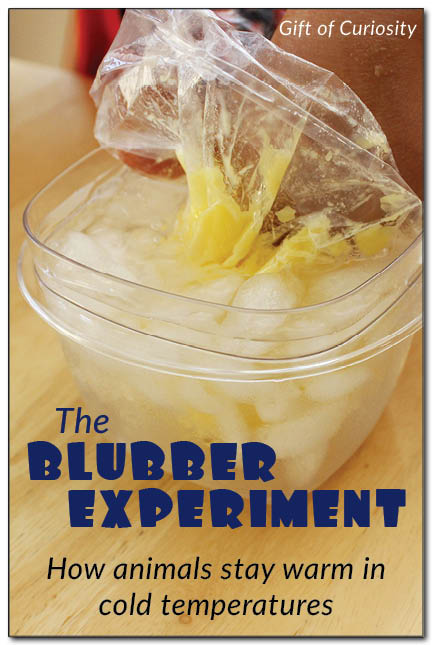
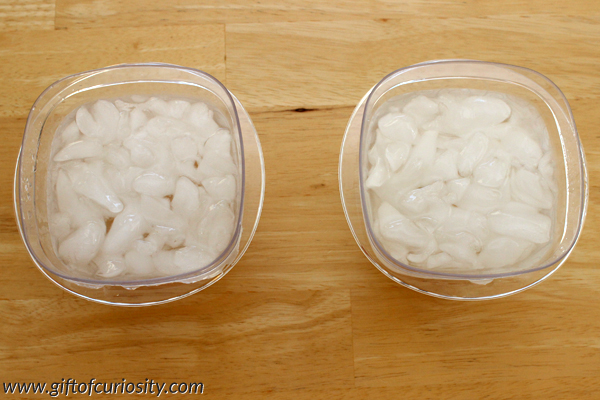
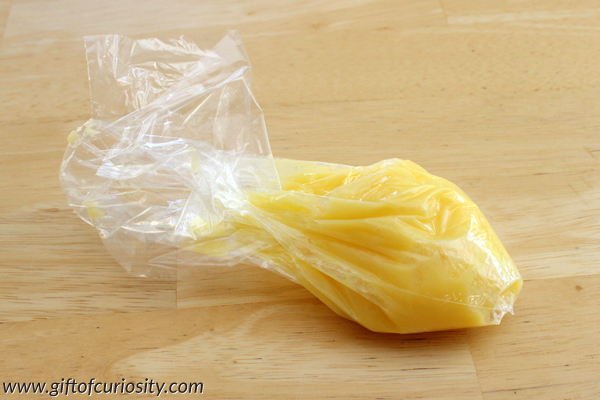
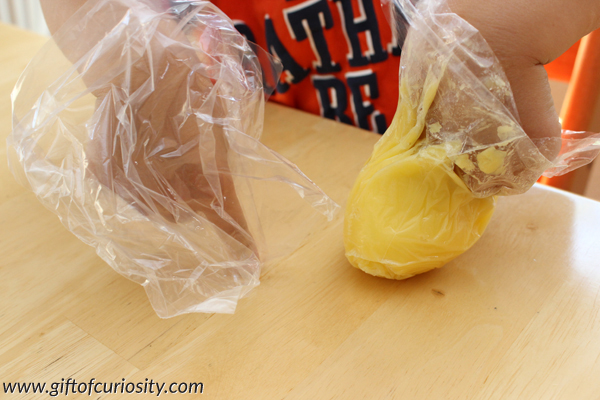
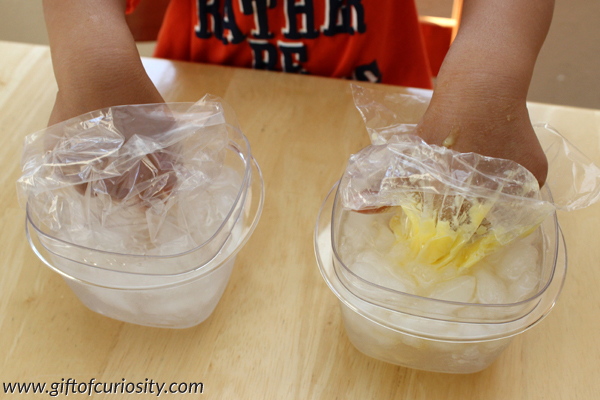
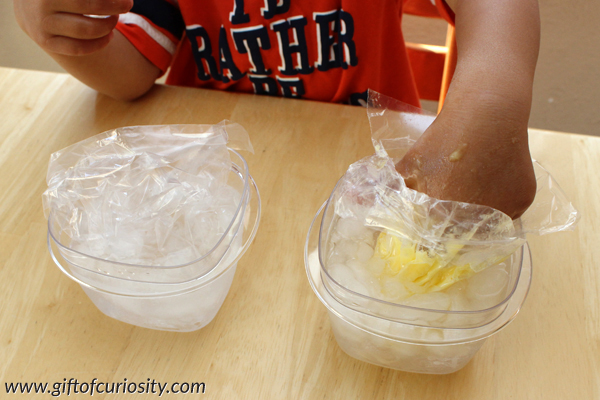
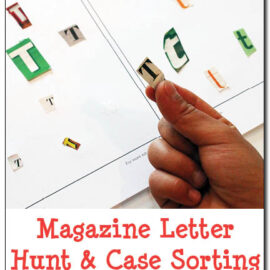


This is a great experiment we use for a marine mammal summer camp! It works great with lard too – for us butter is expensive, so lard works well ;). Also if you want to stay a bit cleaner (who wants to do that?!) you can scoop ~2 cups of lard into a strong freezer bag, then work another bag into it, with your hand in the bag, and work the lard so that it is distributed evenly and sandwiched between the two. We used duct tape to ‘seal’ (no pun intended) the bags together. This way we can use the bags again and again, storing them in the freezer.
Great tip about using two bags to keep things a bit cleaner!
Love this idea! Especially the tip about using lard instead of butter. I will have to try this sometime this summer. Pinned!
You can also use shortening, which might be a bit cheaper than butter, I know that’s what we used when I was teaching, and like Brenna said, add a second bag.
Of course for me, no matter if I try 2 bags or 1 bag, I always seem to end up ridiculously messy.
Thanks for linking up again.
HI,
Why not just have the kids put on a fabric glove and then a rubber glove over it? I did this blubber experiment years ago and it was so unbelievably messy. I switched to the gloves and it taught the concept without causing a need for a huge clean up.
If mess is a real concern, I agree your idea could work. But since blubber is literally made of fat, I liked the idea of having my kids wear real “blubber” to see its insulating properties.
Hey Katie,
I like this experiment for kids and was looking for one to show a group of VBS kids. Due to COVID-19 pandemic our church is doing a Facebook live VBS this year. We lesson is drawn from Jonah and the whale so I would like to use your experiment outlined here for that. Just wanted to make sure that was fine and I’ll reference your website when doing the experiment. I look forward to hearing from you.
Thanks,
Matt
Yes, you are welcome to use the experiment with your VBS students. I hope they enjoy!
This was a great hands on experiment with my 2, 3, 4 and 5yo preschoolers! They called it blummer, plumber, flubber and blubber😊. How fun! We put the ice water outside to freeze in the container and that worked well for our frozen tundra manipulative! Thank you for sharing!